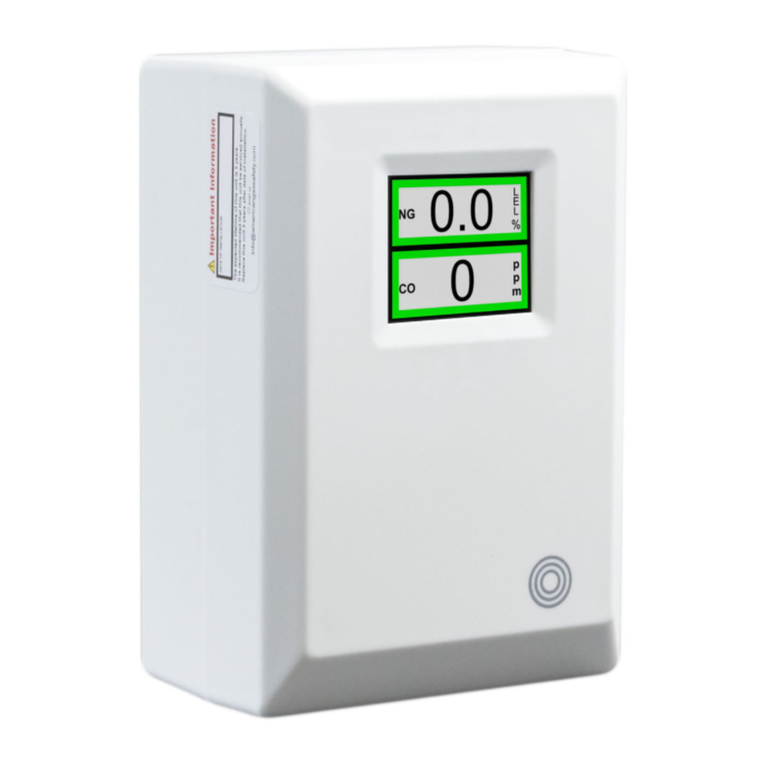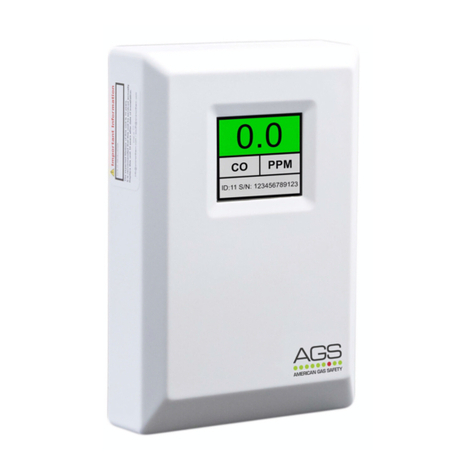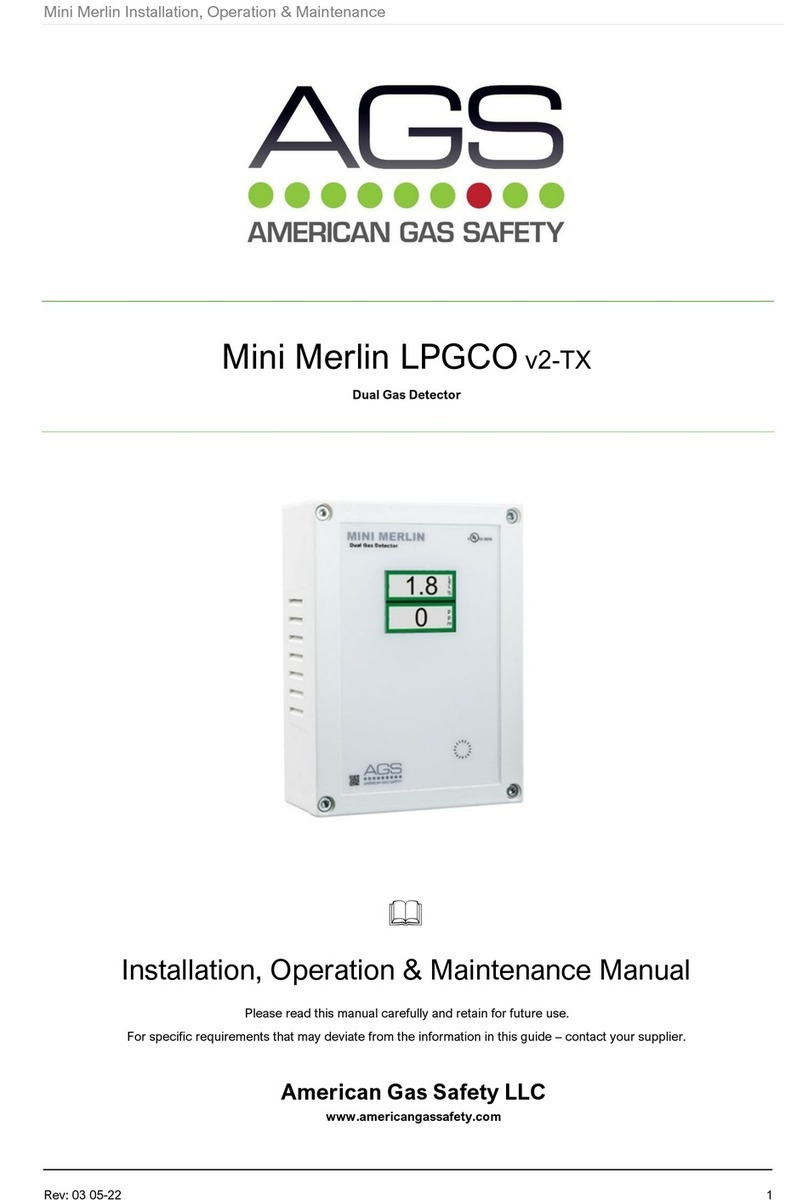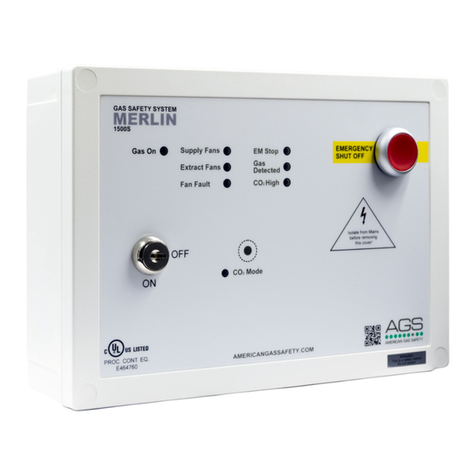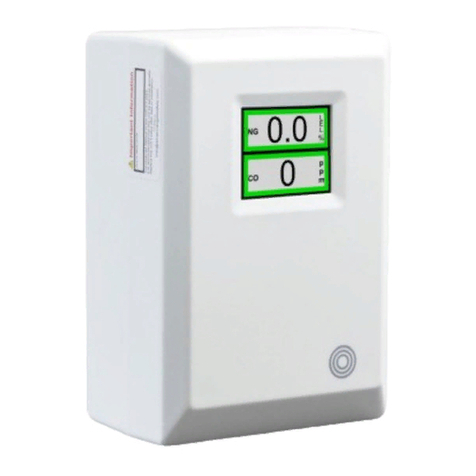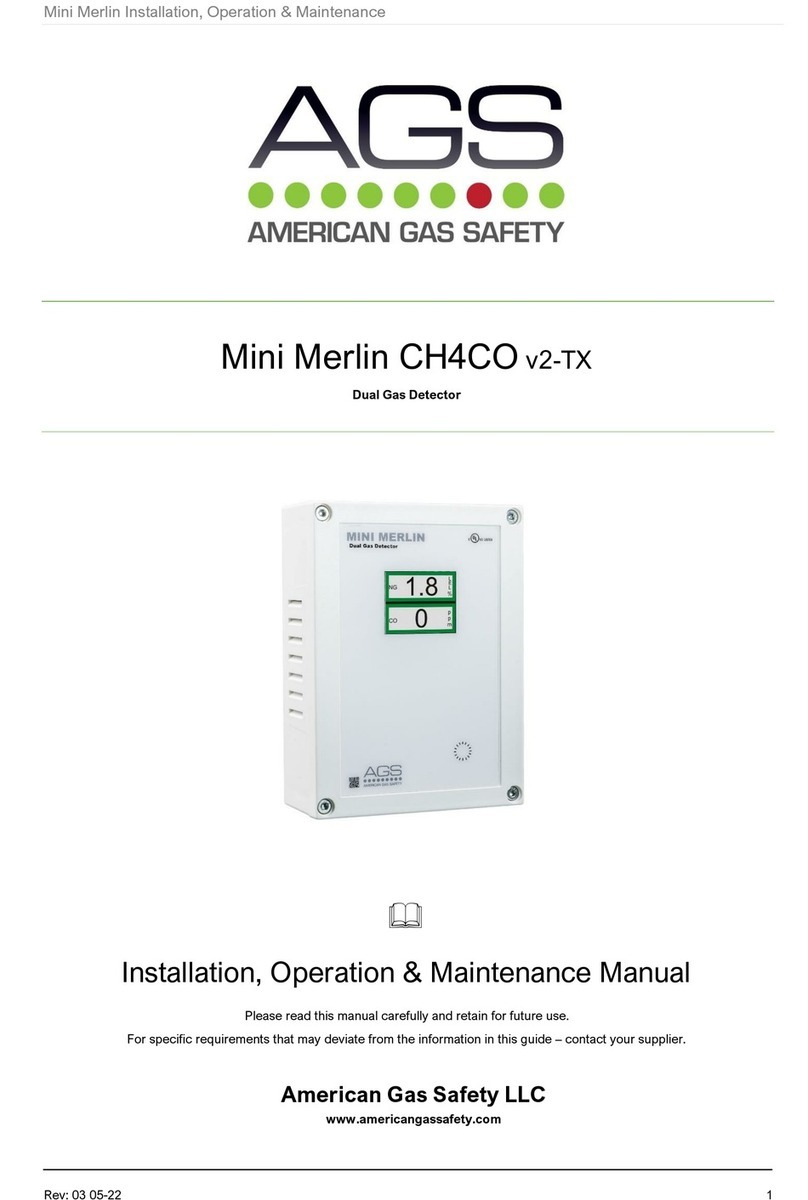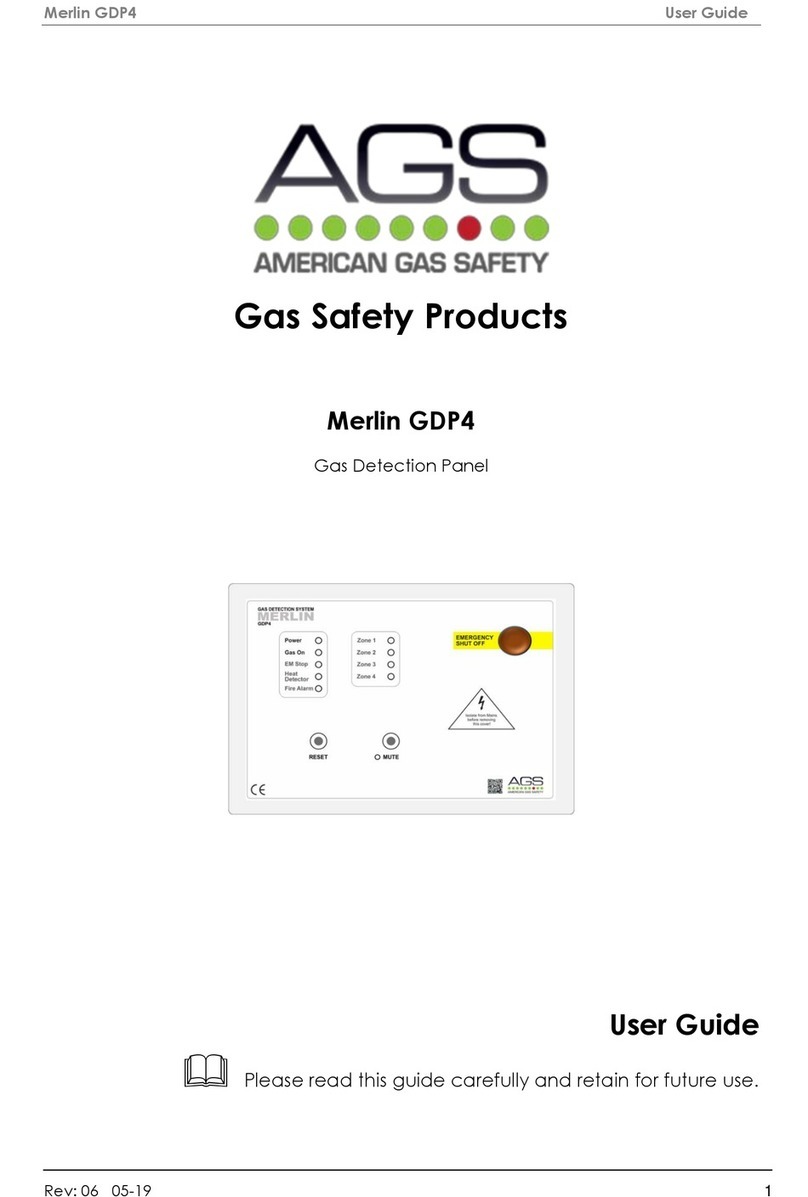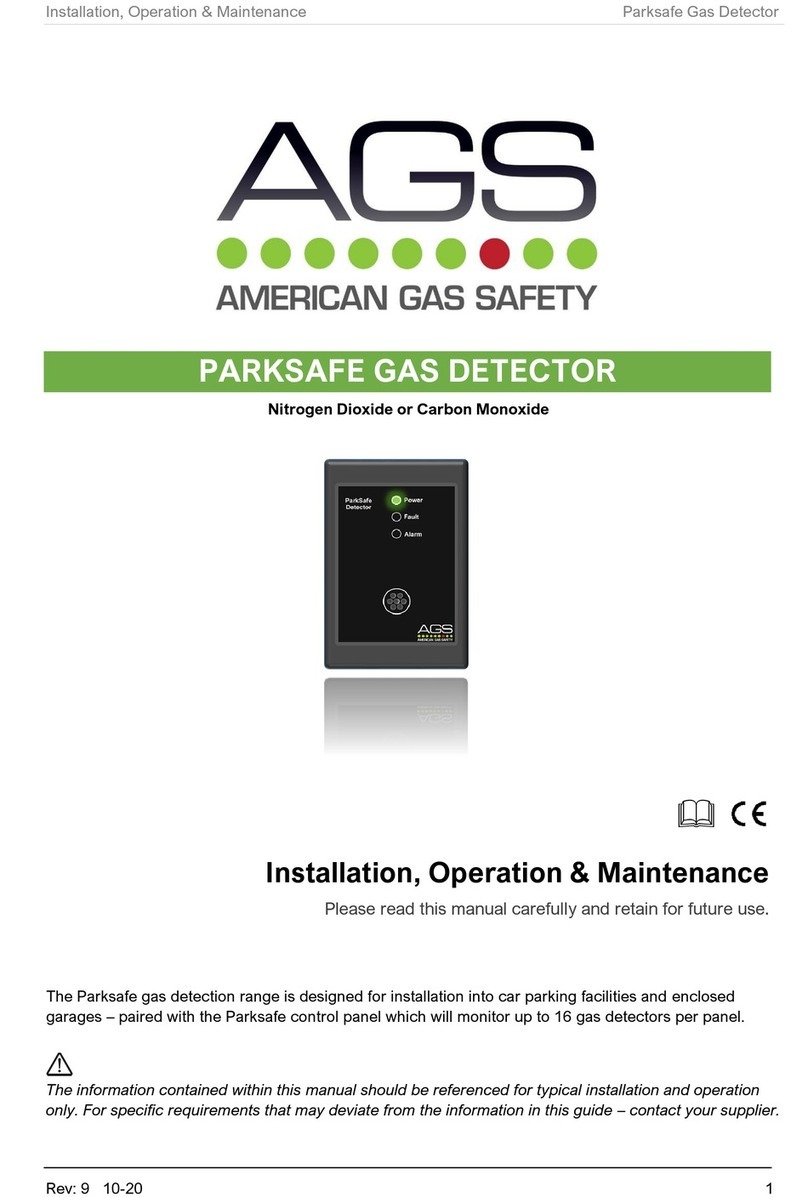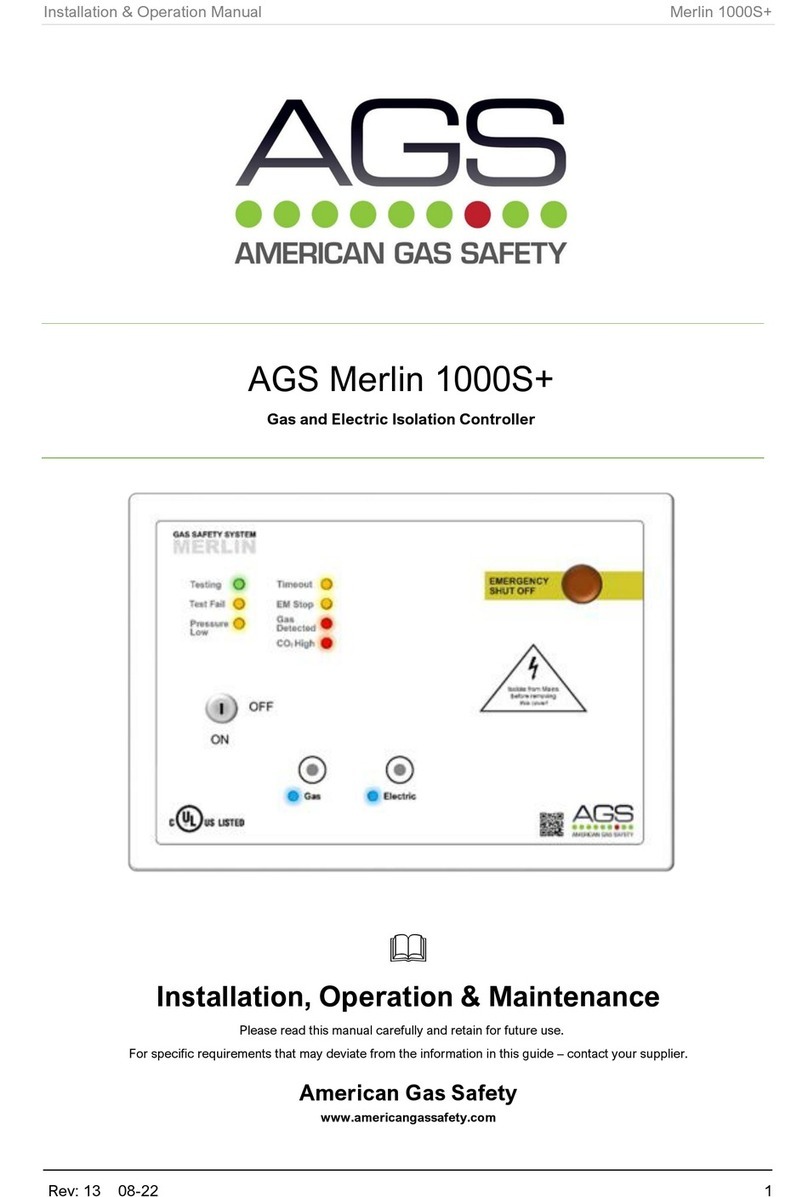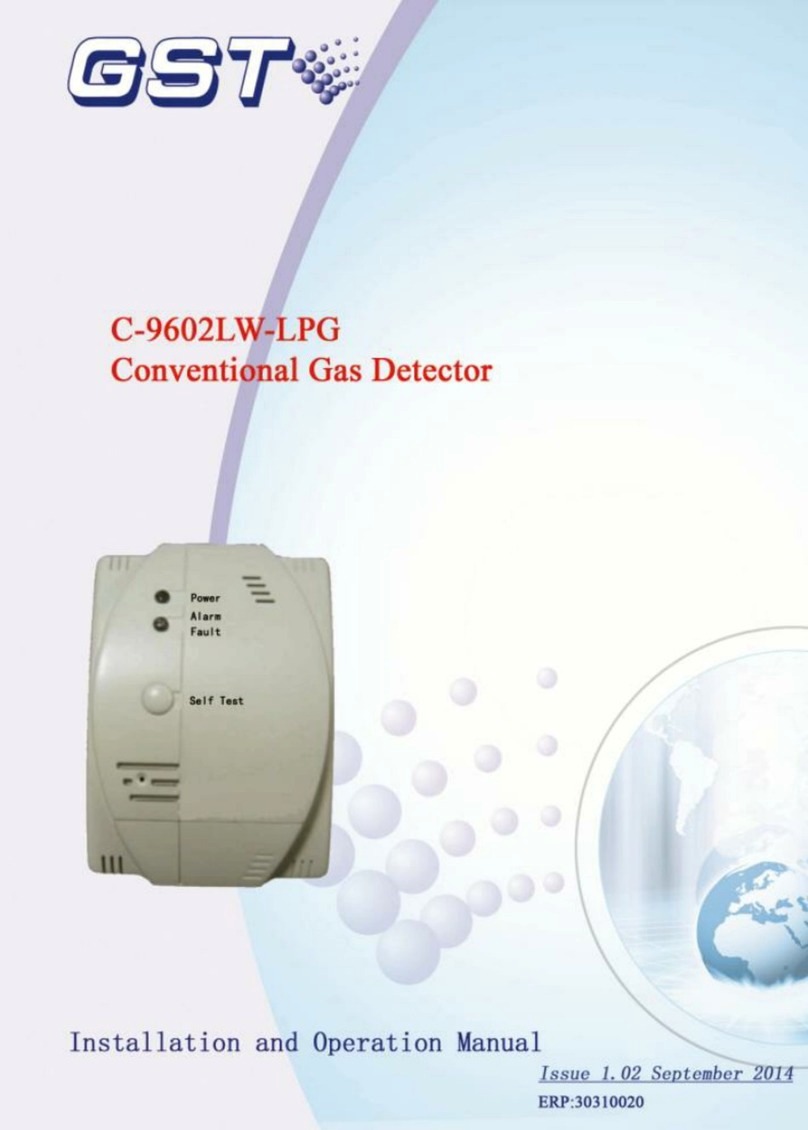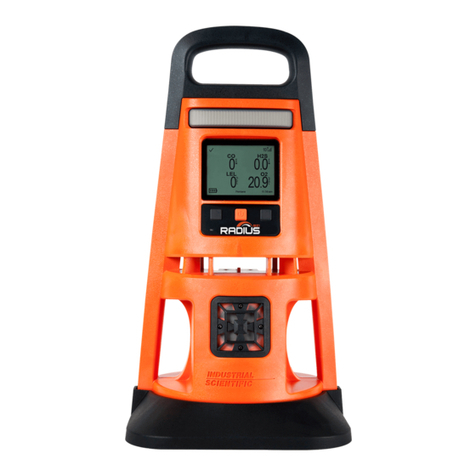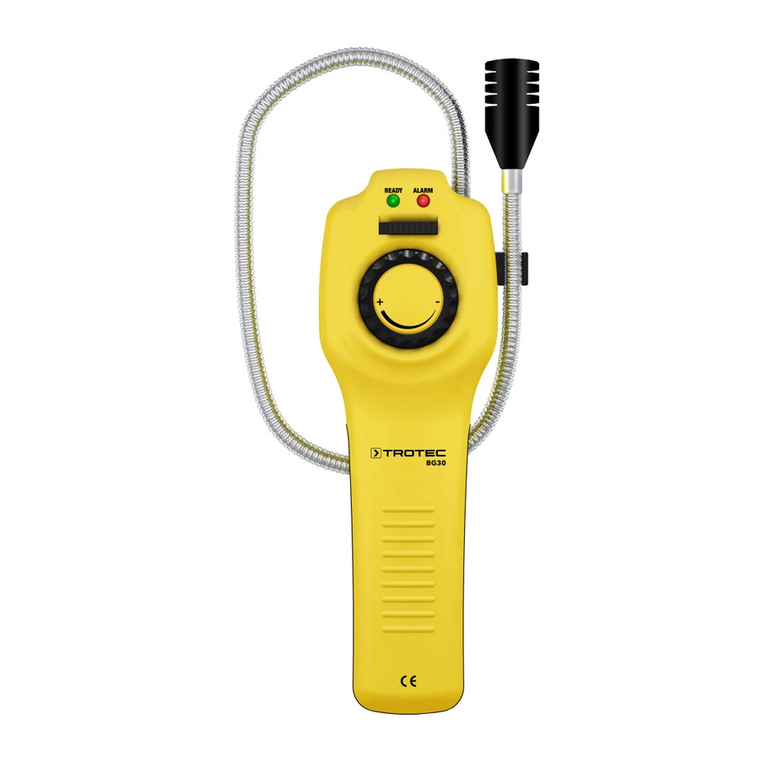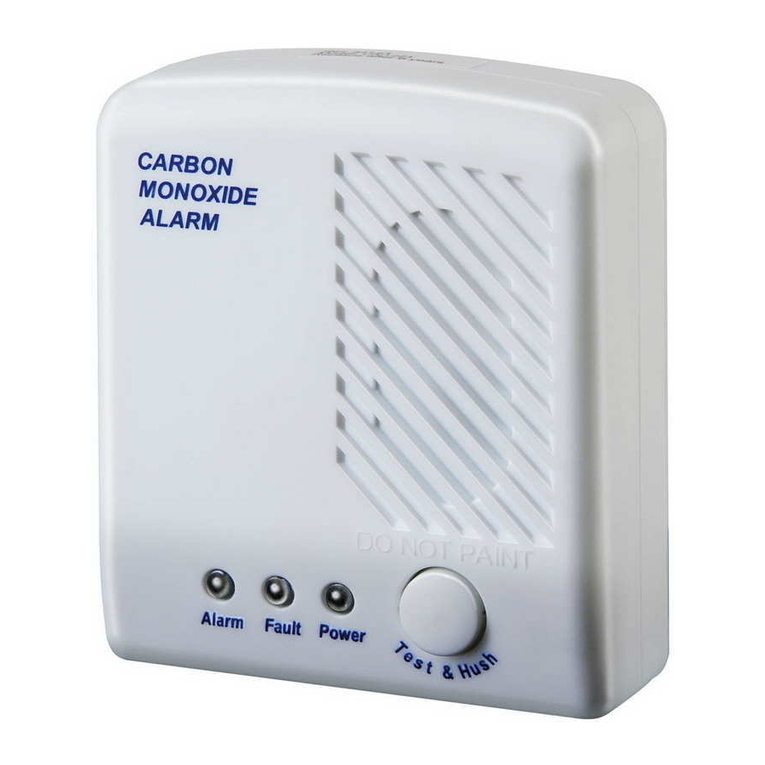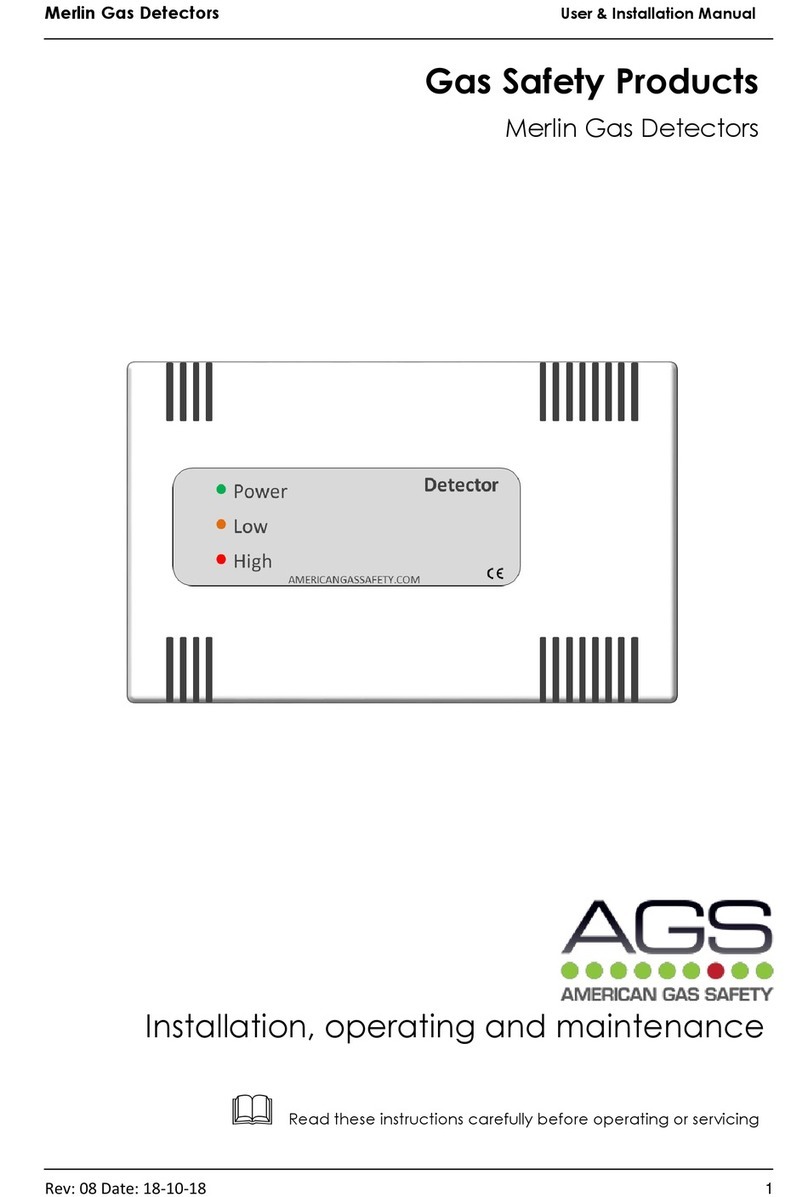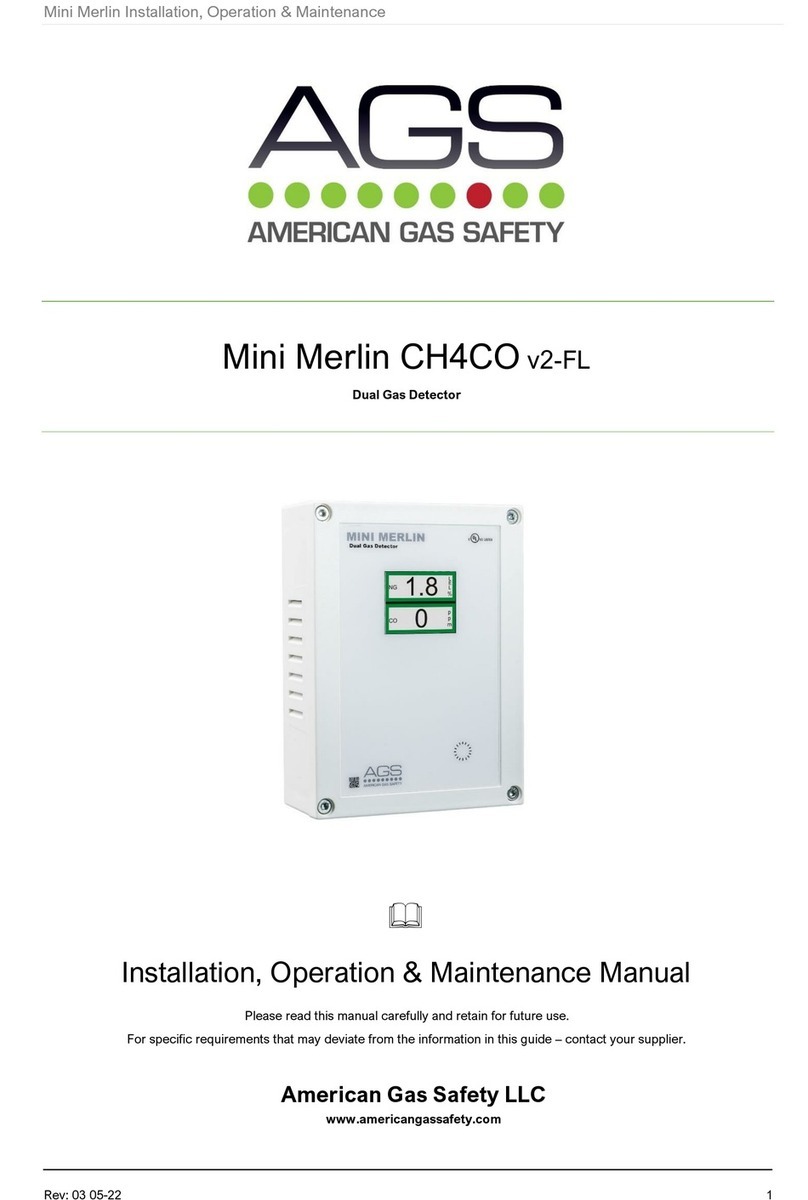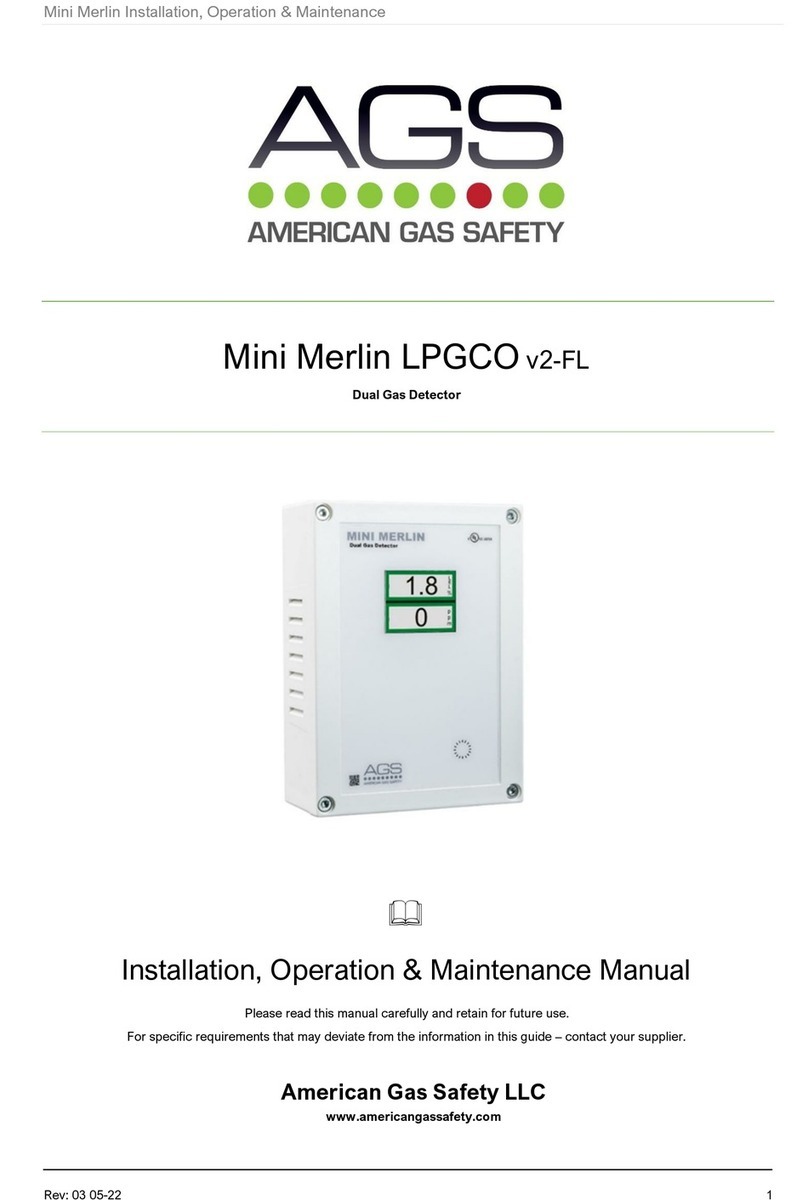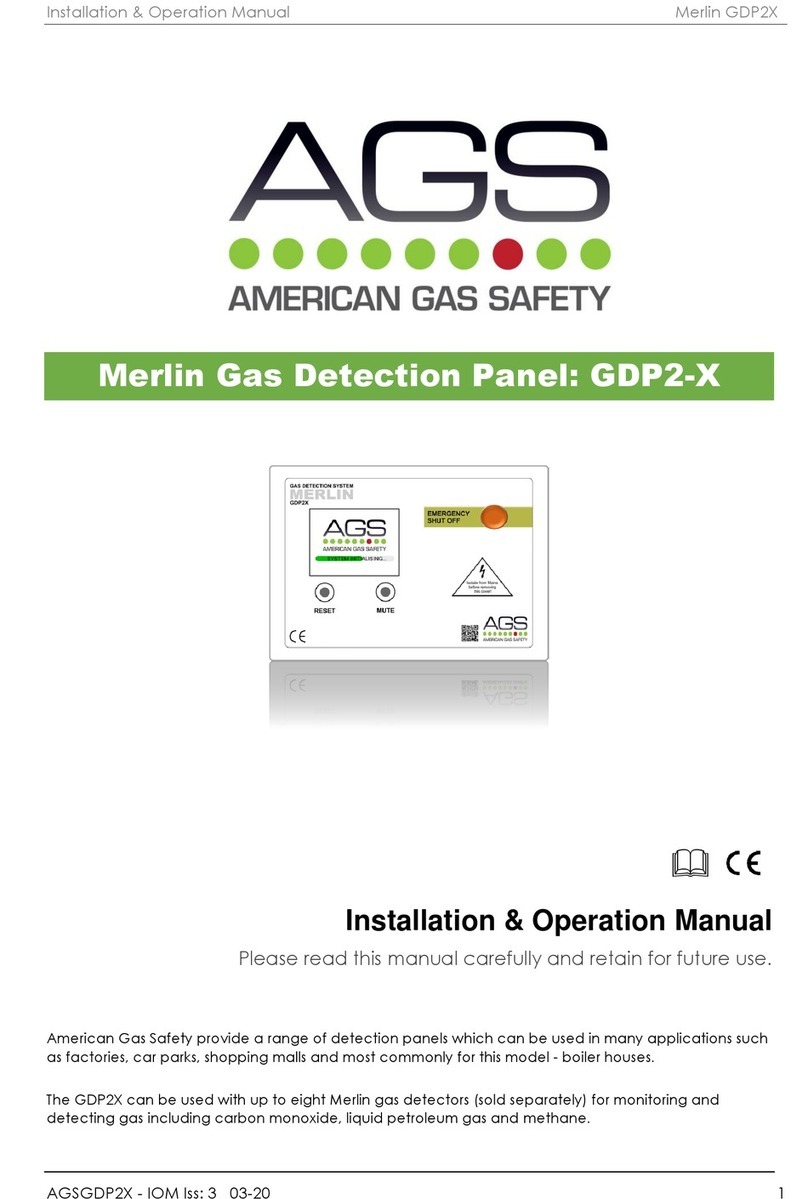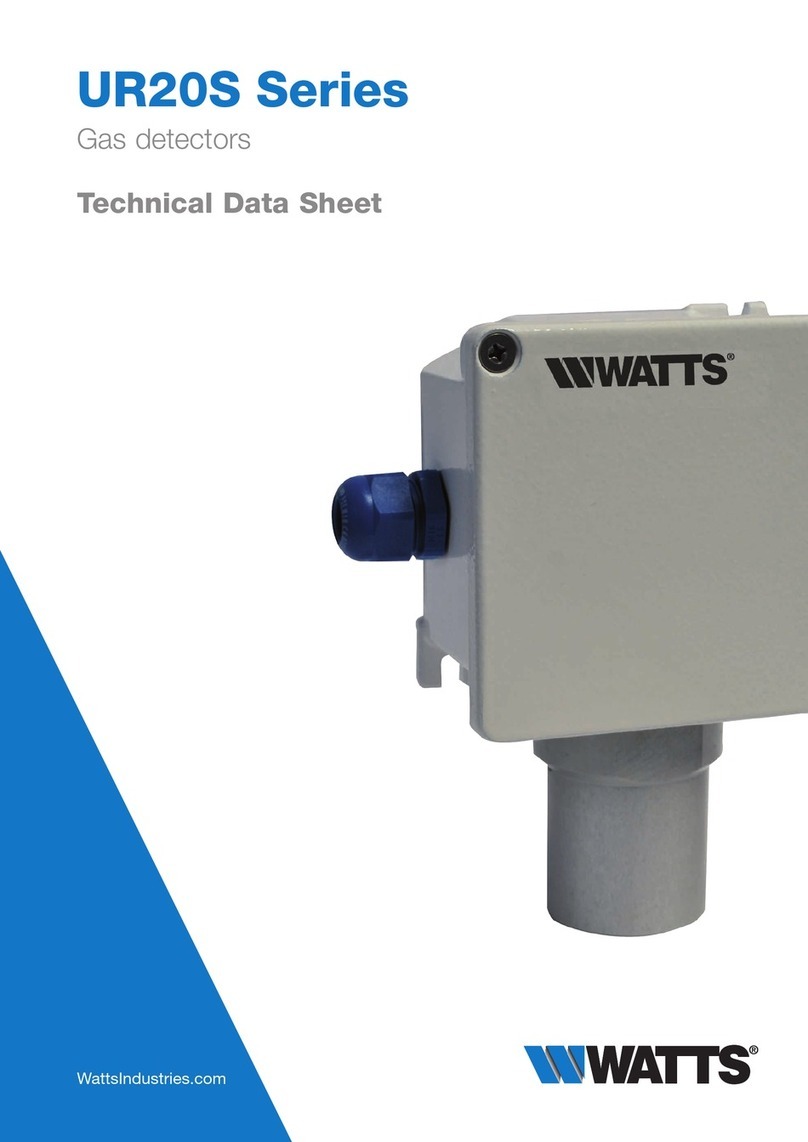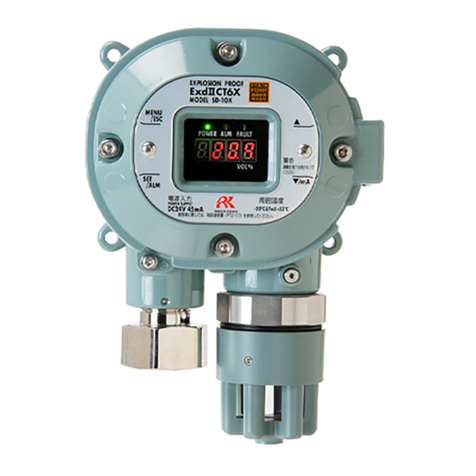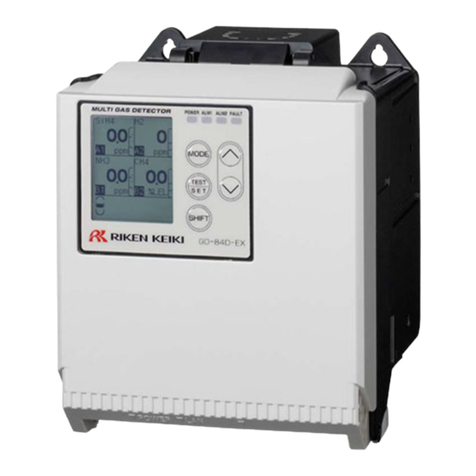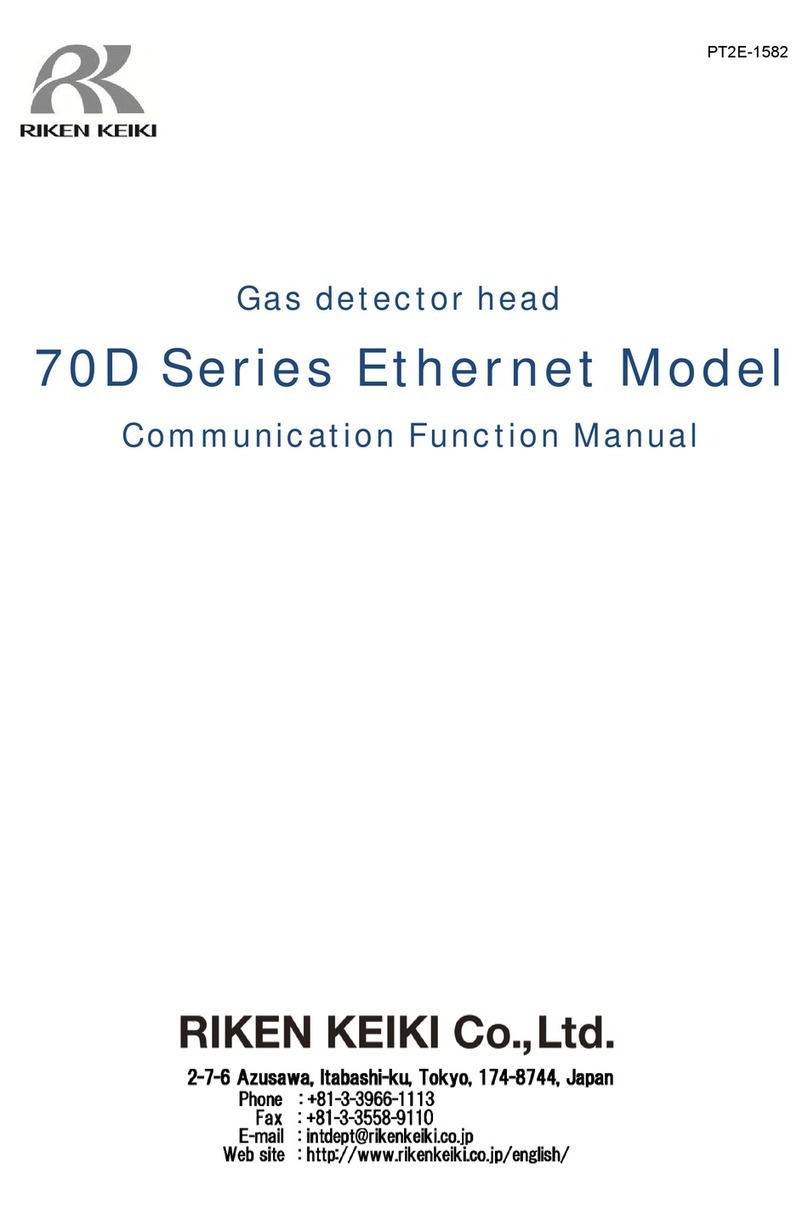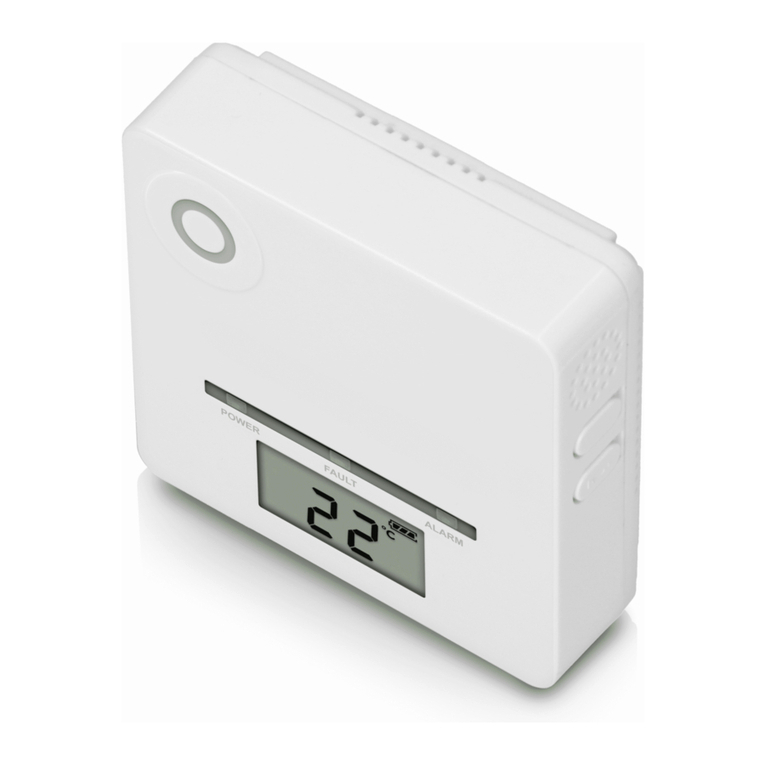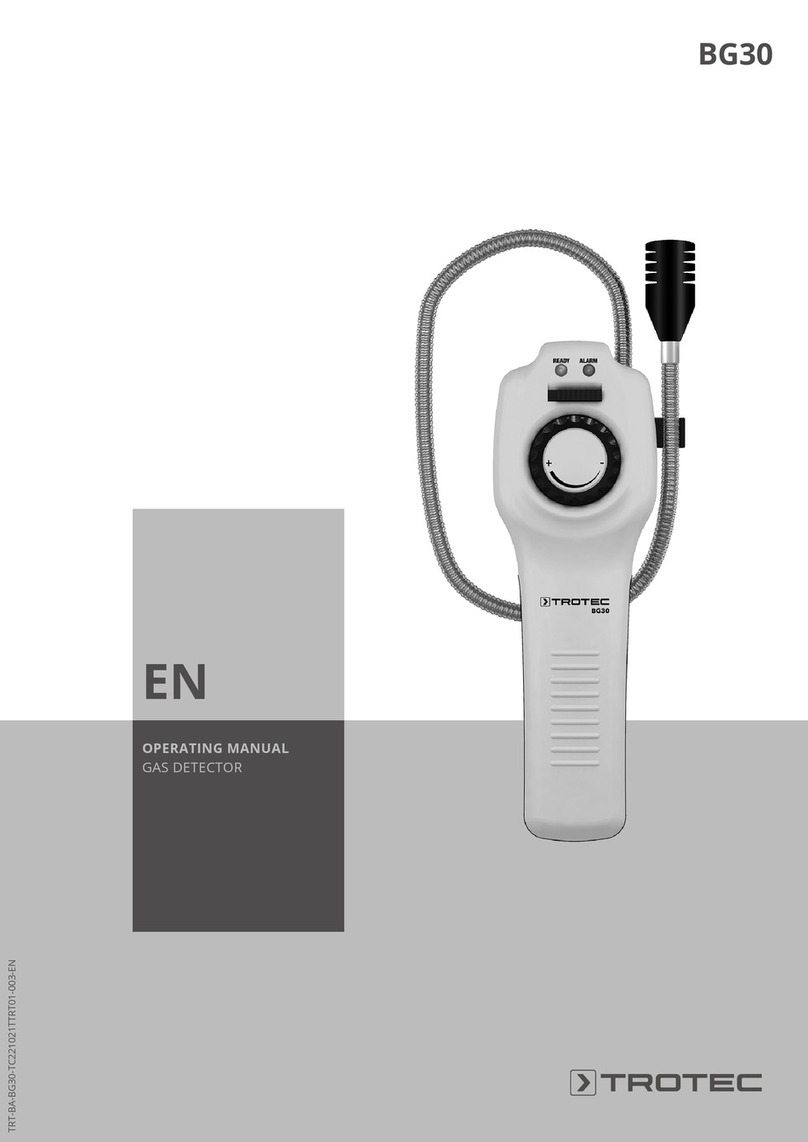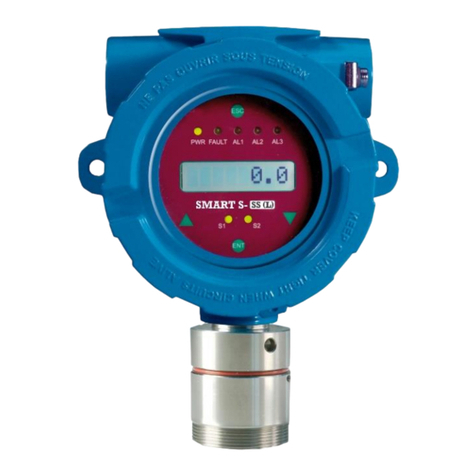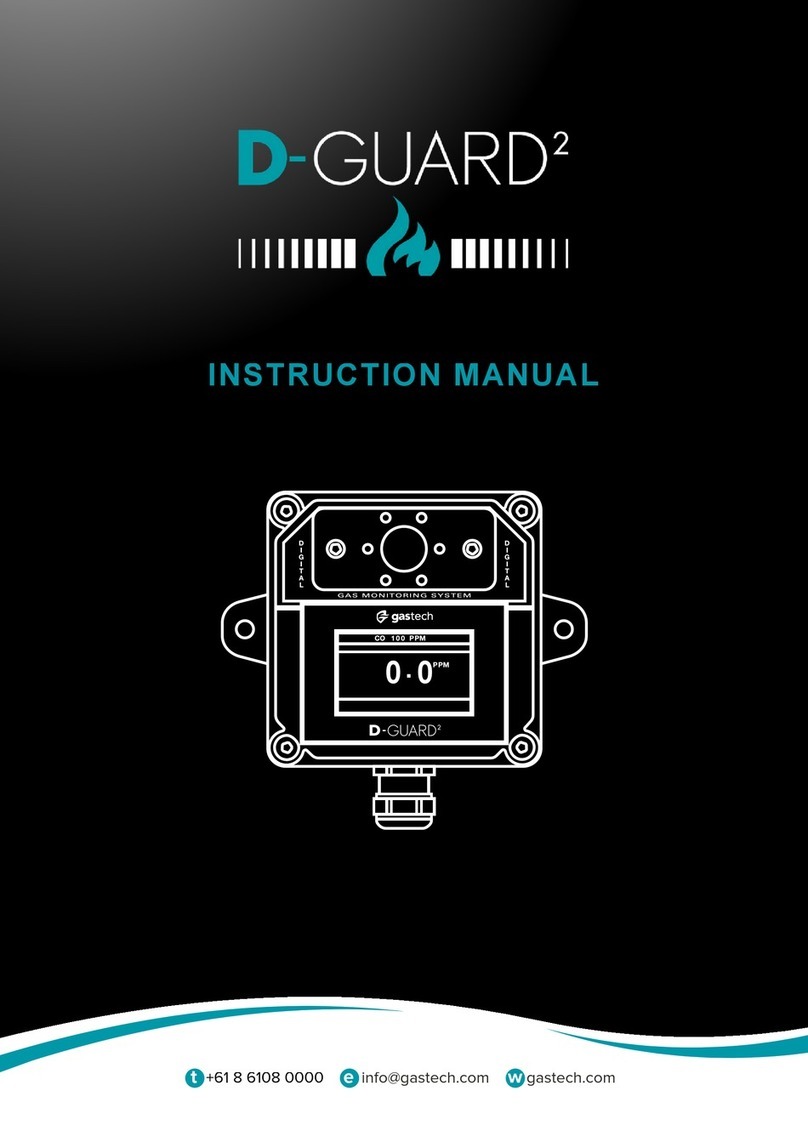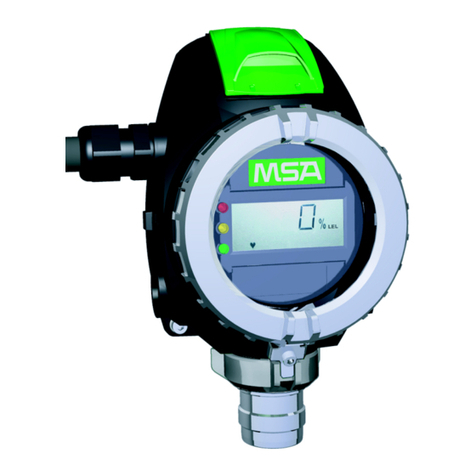Installation, Operation & Maintenance Parksafe Gas Detector
Rev: 11 0421 3
Important Warning Statements
Before any installation, use or maintenance read this manual carefully.
The information contained within this manual should be referenced for typical installation and operation only.
For site specific requirements that may deviate from the information in this guide –contact your supplier.
If this device is used in a manner not specified by the manufacturer, the safety and provided by this device may be impaired.
This device is designed for indoor operation only.
The expected lifetime of a NO2 gas sensor element is 2 years upon initial power up. The Parksafe control panel will display a
message to indicate this time and detectors should immediately be replaced.
The expected lifetime of a CO gas sensor element is 5 years upon initial power up. The Parksafe control panel will display a
message to indicate this time and detectors should immediately be replaced.
It is recommended that this device be commissioned upon installation and serviced annually.
Do not apply lighter gas or other aerosols to the device –this will cause extreme damage.
High concentrations of alcohol / ethanol found in many products may damage, deteriorate or affect the gas sensing elements
–Avoid exposure near your device.
This equipment is designed to detect carbon monoxide and nitrogen dioxide from any source of combustion.
It is NOT designed to detect smoke, fire or other gases and should NOT be used as such.
DO NOT remove the gas sensing module when the system is powered up.
This device provides early warning of the presence of nitrogen dioxide or carbon monoxide, usually before a healthy adult
would experience symptoms. This early warning is possible provided your alarm is located, installed and maintained as
described in this guide.
This device requires a continual supply of electrical power –it will not work without power.
This device should not be used to substitute proper installation, use and / or maintenance of fuel burning appliances
including appropriate ventilation and exhaust systems.
This device does not prevent nitrogen dioxide or carbon monoxide from occurring or accumulating.
Actuation of your alarm indicates the presence of dangerous levels of NO2or CO.
Seek fresh air supply and contact your local gas emergency service should you suspect a gas leak.
This device may not fully safeguard individuals with specific medical conditions.
If in doubt, consult a doctor / physician.
Your product should reach you in perfect condition, if you suspect it is damaged, contact your supplier.
Manufacturer’s Warranty
Coverage: The manufacturer warrants to the original consumer purchaser, that this product will be free of defects in material and
workmanship for a period of three (3) years from date of purchase. The manufacturer’s liability hereunder is limited to replacement
of the product with repaired product at the discretion of the manufacture. This warranty is void if the product has been damaged by
accident, unreasonable use, neglect, tampering or other causes not arising from defects in material or workmanship.
This warranty extends to the original consumer purchaser of the product only. Disclaimers: Any implied warranties arising out of
this sale, including but not limited to the implied warranties of description, merchantability and intended operational purpose, are
limited in duration to the above warranty period. In no event shall the manufacturer be liable for loss of use of this product or for any
indirect, special, incidental or consequential damages, or costs, or expenses incurred by the consumer or any other user of this
product, whether due to a breach of contract, negligence, strict liability in tort or otherwise. The manufacturer shall have no liability
for any personal injury, property damage or any special, incidental, contingent or consequential damage of any kind resulting from
gas leakage, fire or explosion. This warranty does not affect your statutory rights. Performance: During the above warranty period,
your product will be replaced with a comparable product if the defective product is returned together with proof of purchase date.
The replacement product will be in warranty for the remainder of the original warranty period or for six months –whichever is the
greatest.
Information on waste disposal for consumers of electrical & electronic equipment.
When this product has reached the end of its life it must be treated as Waste Electrical & Electronics Equipment (WEEE). Any
WEEE marked products must not be mixed with general household waste, but kept separate for the treatment, recovery and
recycling of the materials used. Please contact your supplier or local authority for details of recycling schemes in your area.
At the end of their working life, electrochemical sensors for parksafe detectors should be disposed of in an environmentally safe
manner.Alternatively all detectors can be securely packaged and returned to AGS clearly marked for disposal.
Electrochemical sensors should not be incinerated as this may cause the cell to emit toxic fumes.












